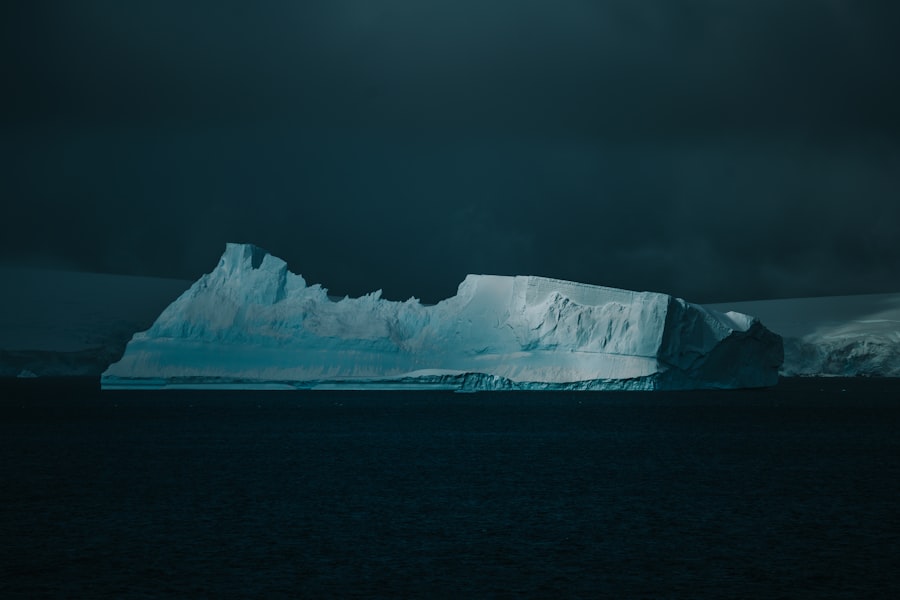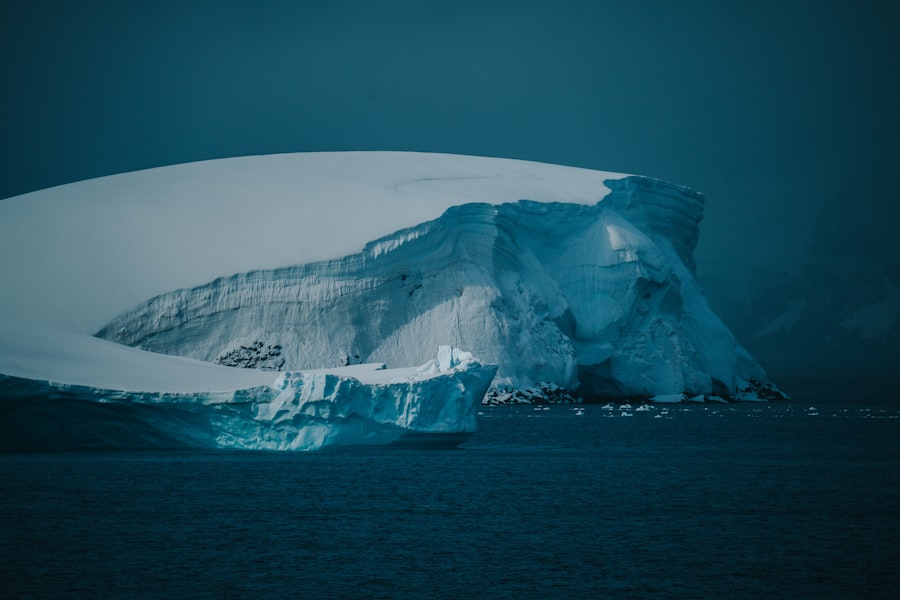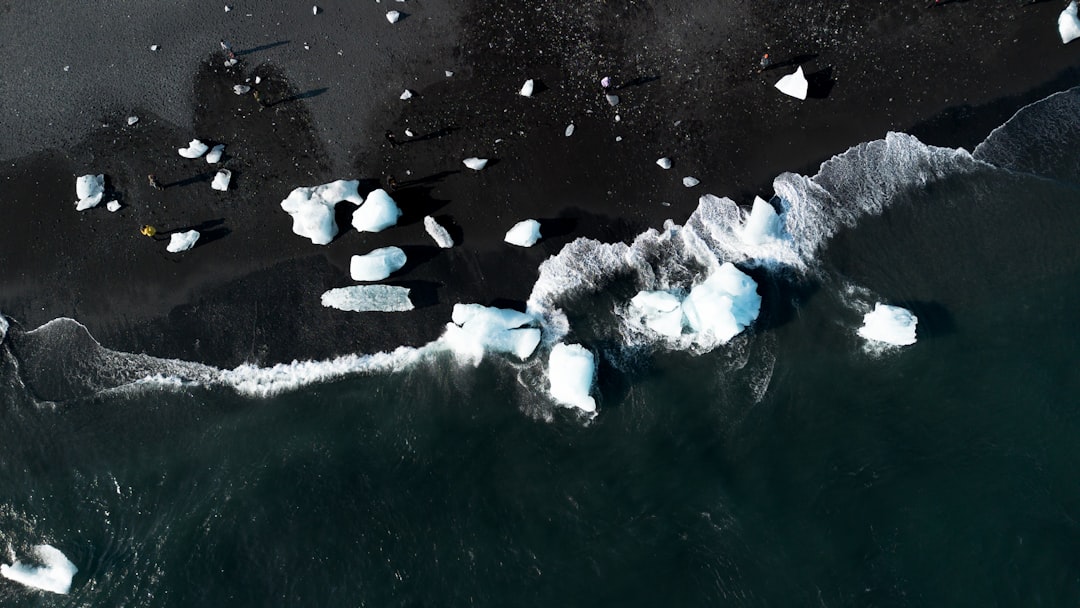The icy expanse of Antarctica has long been a subject of intrigue and mystery, not only for its harsh climate and unique wildlife but also for the whispers of a secret base hidden beneath its frozen surface. This clandestine installation, often referred to in conspiracy circles, is said to be a hub of advanced research and possibly even extraterrestrial activity. The allure of such a base captivates the imagination, prompting questions about what lies beneath the ice and the implications of its existence.
As the world becomes increasingly aware of the potential for undisclosed activities in this remote region, the narrative surrounding the secret base continues to evolve, drawing in both skeptics and believers alike. The notion of a secret base in Antarctica is not merely a figment of fiction; it is rooted in a complex tapestry of historical exploration, scientific research, and geopolitical maneuvering. The continent, largely uninhabited and governed by international treaties, serves as an ideal location for covert operations.
The extreme conditions and isolation provide a perfect cover for activities that might otherwise attract scrutiny. As interest in Antarctica grows, so too does the speculation surrounding what might be hidden beneath its vast ice sheets.
Key Takeaways
- The secret base in Antarctica is surrounded by numerous theories and speculations about its existence and purpose.
- Historical exploration of Antarctica provides context for understanding the potential for hidden installations.
- Evidence and whistleblower testimonies suggest possible government involvement and cover-ups.
- International treaties regulate activities in Antarctica, complicating the secrecy of any covert base.
- Public interest and media coverage continue to fuel debates about the implications of such a base.
Historical Background of Antarctica and its Exploration
Antarctica’s history is rich and varied, marked by exploration and discovery that dates back to the early 19th century. The continent was first sighted in 1820 by a Russian expedition led by Fabian Gottlieb von Bellingshausen and Mikhail Lazarev. This initial encounter sparked a wave of interest among explorers from various nations, leading to numerous expeditions aimed at mapping the land and understanding its unique environment.
Over the decades, explorers such as Ernest Shackleton and Robert Falcon Scott became household names, their journeys fraught with peril yet filled with remarkable discoveries. As the 20th century unfolded, Antarctica transitioned from a land of exploration to one of scientific research. The establishment of research stations by multiple countries during the International Geophysical Year in 1957-58 marked a significant turning point.
This collaborative effort laid the groundwork for ongoing scientific endeavors that continue to this day. However, amidst this spirit of cooperation, the continent’s remote nature has also fostered an environment ripe for speculation about hidden agendas and undisclosed activities.
Theories and Speculations Surrounding the Secret Base

The theories surrounding the alleged secret base in Antarctica are as varied as they are intriguing. Some suggest that it serves as a research facility for advanced technologies, possibly including climate manipulation or even time travel experiments. Others speculate that it is a site for extraterrestrial contact or reverse engineering of alien technology.
These theories often draw on anecdotal evidence and the enigmatic nature of Antarctica itself, where vast stretches remain unexplored and shrouded in secrecy. The allure of conspiracy theories surrounding the base is further fueled by the lack of transparency regarding military operations in the region. The presence of military personnel at research stations raises eyebrows, leading some to believe that there is more to these activities than meets the eye.
The combination of historical secrecy, unexplained phenomena, and the continent’s inhospitable environment creates a fertile ground for speculation that captivates both conspiracy theorists and curious minds alike.
Evidence and Clues Pointing to the Existence of the Base
| Type of Evidence | Description | Source/Location | Significance | Date Reported |
|---|---|---|---|---|
| Satellite Imagery | Unusual structures and activity detected in remote desert area | Classified satellite images over Area 51 | Indicates possible secret installations | 2023-11-15 |
| Eyewitness Accounts | Multiple reports of unidentified aircraft and personnel | Local residents near Groom Lake, Nevada | Suggests ongoing experimental testing | 2022-08-09 |
| Declassified Documents | Government files referencing secret testing facilities | National Archives and Records Administration | Confirms existence of restricted military base | 2021-05-22 |
| Radar Anomalies | Unexplained radar signals detected in restricted airspace | Military radar stations near Nevada Test Site | Possible indication of advanced aircraft testing | 2023-02-14 |
| Security Measures | High-level security checkpoints and restricted zones | Perimeter of suspected base location | Supports theory of sensitive operations | Ongoing |
While concrete evidence of a secret base remains elusive, various clues have emerged over the years that fuel speculation about its existence. Satellite imagery has revealed unusual structures and formations that some claim could be indicative of human-made installations. Additionally, reports of strange lights and sounds emanating from beneath the ice have sparked further intrigue, leading enthusiasts to believe that something significant lies hidden below.
Moreover, the presence of unexplained geological formations and anomalies has led some researchers to propose that these could be remnants of ancient civilizations or advanced technologies long buried beneath the ice. While mainstream science often dismisses these claims as pseudoscience, they continue to capture public interest and inspire further investigation into what might be concealed within Antarctica’s icy depths.
Alleged Purposes and Activities of the Secret Base
The alleged purposes of the secret base in Antarctica are as diverse as the theories surrounding its existence. Some proponents argue that it serves as a hub for cutting-edge scientific research, focusing on climate change, renewable energy technologies, or even genetic engineering. The extreme conditions of Antarctica provide a unique environment for testing theories and conducting experiments that would be impossible elsewhere.
Conversely, other theories suggest more nefarious activities taking place within the base’s confines. Some speculate that it is involved in military operations or surveillance activities aimed at monitoring global communications or tracking potential threats. The idea that governments might use Antarctica as a testing ground for advanced weaponry or experimental technologies adds an additional layer of intrigue to the narrative surrounding this elusive installation.
Government Involvement and Cover-Up of the Base

The notion that governments are involved in a cover-up regarding the secret base adds an element of drama to the story. Many conspiracy theorists argue that there is a concerted effort to keep information about the base hidden from the public eye. This belief is often fueled by historical instances where governments have withheld information about military operations or scientific research deemed sensitive.
The Antarctic Treaty System, which governs international relations on the continent, is frequently cited as evidence of potential cover-ups. Critics argue that while the treaty promotes peaceful cooperation among nations, it also provides a convenient framework for concealing activities that might otherwise raise alarms. The lack of transparency surrounding military presence in Antarctica only serves to deepen suspicions about what might be occurring behind closed doors.
Whistleblower Testimonies and Insider Information
Whistleblower testimonies have played a significant role in shaping public perception of the secret base in Antarctica. Individuals claiming to have worked on or near the base have come forward with sensational accounts of advanced technologies, alien encounters, and covert operations. These testimonies often capture media attention and fuel further speculation about what lies beneath the ice.
While some whistleblowers have been met with skepticism, others have garnered a following among conspiracy enthusiasts who view their claims as credible evidence of hidden truths. The stories shared by these individuals often highlight a sense of urgency, suggesting that there are forces at play that could have profound implications for humanity if left unchecked.
International Agreements and Treaties Regarding Antarctica
The Antarctic Treaty System plays a crucial role in shaping international relations on the continent. Established in 1961, this treaty aims to ensure that Antarctica remains a zone dedicated to peace and scientific research. It prohibits military activity and mineral mining while promoting international cooperation among nations conducting research in the region.
However, critics argue that while the treaty promotes transparency, it also creates an environment where covert operations can thrive under the guise of scientific exploration. The complexities of international politics mean that nations may prioritize their interests over transparency, leading to concerns about what activities might be occurring away from public scrutiny.
The Role of Technology in Uncovering the Base
Advancements in technology have played a pivotal role in uncovering potential evidence of the secret base in Antarctica. Satellite imagery has become an invaluable tool for researchers seeking to identify unusual structures or anomalies on the continent’s surface. High-resolution images can reveal patterns that may indicate human activity or installations hidden beneath layers of ice.
These technological advancements have opened new avenues for investigation, allowing researchers to gather data that could either support or debunk claims about the existence of a secret base.
Public Interest and Media Coverage of the Conspiracy
The public’s fascination with conspiracy theories surrounding Antarctica’s secret base has been amplified by media coverage across various platforms. Documentaries, podcasts, and online forums dedicated to exploring these theories have gained popularity, drawing in audiences eager to learn more about potential hidden truths. This surge in interest reflects a broader cultural phenomenon where people seek answers to questions about government transparency and undisclosed activities.
Media coverage often oscillates between sensationalism and skepticism, with some outlets embracing conspiracy theories while others approach them with caution. This dichotomy contributes to an ongoing dialogue about what constitutes credible evidence versus mere speculation, leaving audiences grappling with their own beliefs about what might be happening in one of Earth’s most remote regions.
Implications and Consequences of the Secret Base’s Existence
The existence of a secret base in Antarctica carries profound implications for global politics, scientific research, and public trust in government institutions. If such a facility were confirmed to exist, it could lead to heightened tensions among nations vying for control over resources or strategic advantages in this uncharted territory. The potential for military operations or covert activities could undermine decades of international cooperation established through treaties governing Antarctica.
Moreover, revelations about undisclosed activities could erode public trust in governments worldwide. As citizens become increasingly aware of potential cover-ups or hidden agendas, calls for transparency may grow louder. The consequences could extend beyond Antarctica itself, influencing how nations approach issues related to secrecy and accountability on a global scale.
In conclusion, while concrete evidence supporting the existence of a secret base in Antarctica remains elusive, the theories and speculations surrounding it continue to captivate public interest.
The conspiracy theories surrounding a secret base in Antarctica have captivated the imaginations of many, leading to various speculations about hidden technologies and extraterrestrial connections. For those interested in exploring more about these intriguing claims, you can read a related article that delves into the mysteries of the Antarctic region and its potential secrets. Check it out here: Antarctica’s Hidden Secrets.
WATCH THIS 🛑 The Antarctic City NASA Can’t Erase
FAQs
What is the “Secret Base in Antarctica” conspiracy theory?
The “Secret Base in Antarctica” conspiracy theory suggests that there are hidden military or scientific installations on the continent that are not disclosed to the public. These theories often claim that governments or secret organizations are conducting covert operations or experiments in Antarctica.
Is there any evidence supporting the existence of secret bases in Antarctica?
There is no credible evidence to support the existence of secret bases in Antarctica beyond the known research stations operated by various countries. Antarctica is governed by the Antarctic Treaty System, which promotes scientific cooperation and prohibits military activity on the continent.
What is the Antarctic Treaty System?
The Antarctic Treaty System is an international agreement signed in 1959 that regulates international relations with respect to Antarctica. It designates Antarctica as a scientific preserve, bans military activity, and promotes freedom of scientific investigation and environmental protection.
Are there any military installations in Antarctica?
No, the Antarctic Treaty prohibits any military activity, including the establishment of military bases or weapons testing. The continent is used primarily for peaceful scientific research.
Why do conspiracy theories about secret bases in Antarctica persist?
Conspiracy theories about secret bases in Antarctica persist due to the continent’s remote location, harsh environment, limited access, and the secrecy surrounding some scientific research. These factors can fuel speculation and imaginative stories.
What are the known research stations in Antarctica?
There are over 70 research stations in Antarctica operated by various countries, including the United States’ McMurdo Station, Russia’s Vostok Station, and Argentina’s Esperanza Base. These stations conduct scientific research in fields such as climate science, glaciology, and biology.
Can civilians visit Antarctica?
Yes, civilians can visit Antarctica, typically through organized tours and cruises. However, all visitors must comply with strict environmental regulations and guidelines set by the Antarctic Treaty System to protect the fragile ecosystem.
How is information about activities in Antarctica monitored?
Activities in Antarctica are monitored through international cooperation, satellite imagery, and inspections by treaty parties to ensure compliance with the Antarctic Treaty. Transparency and scientific collaboration are key components of governance on the continent.
